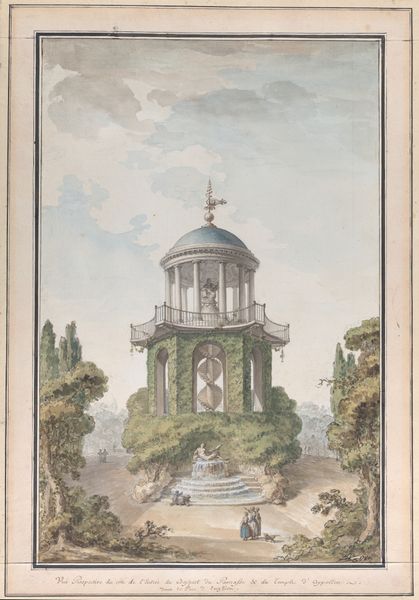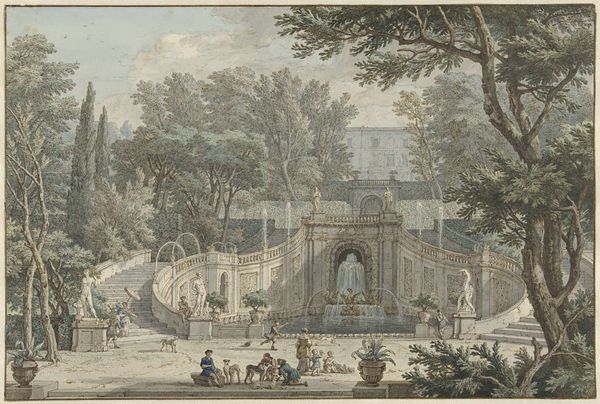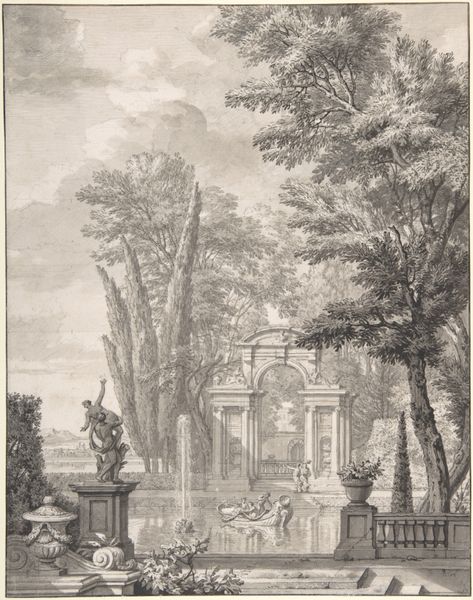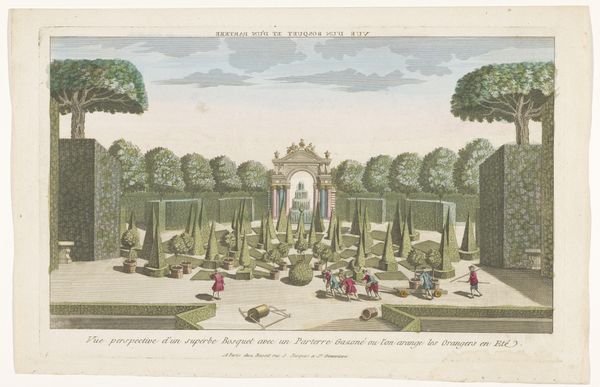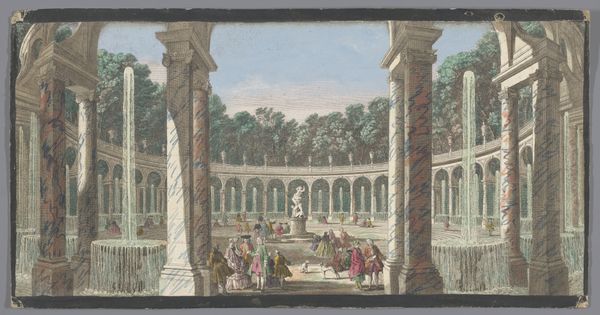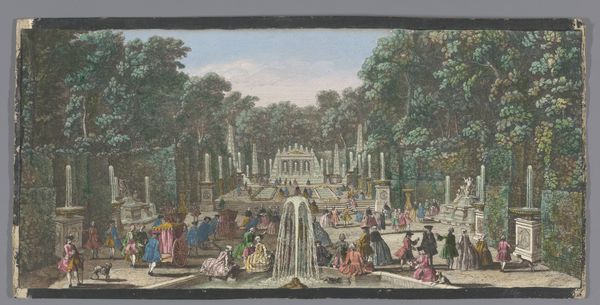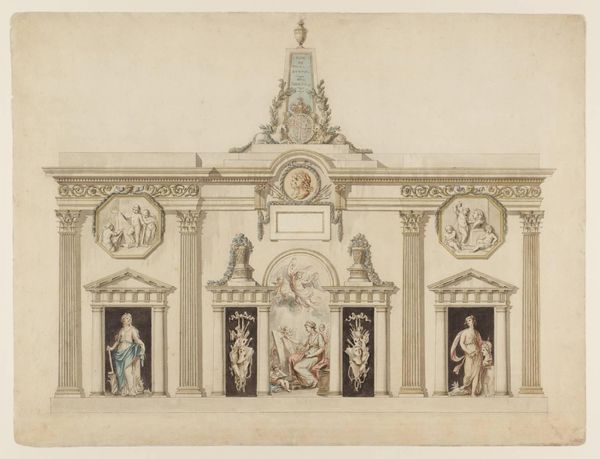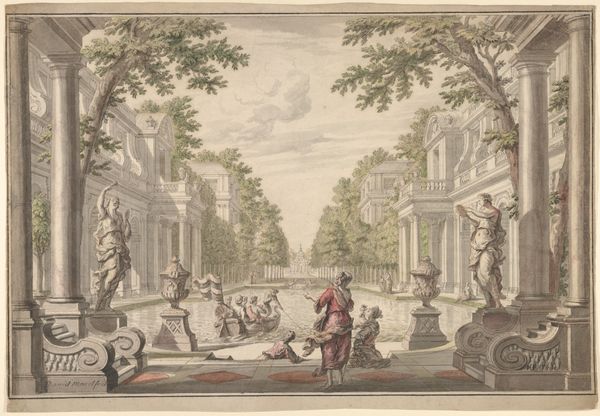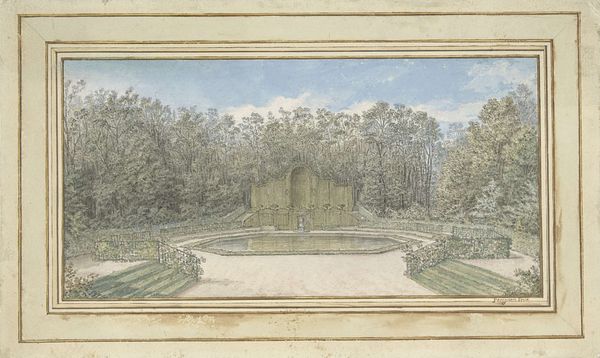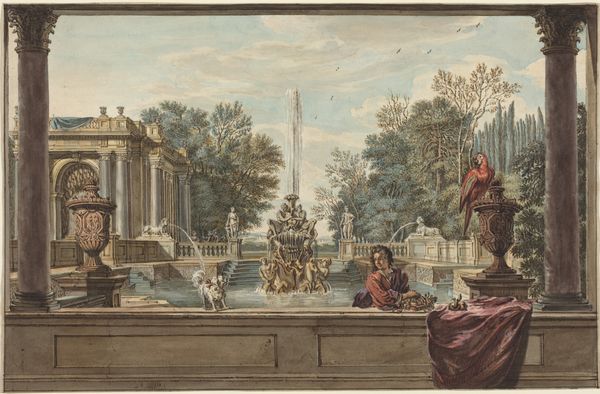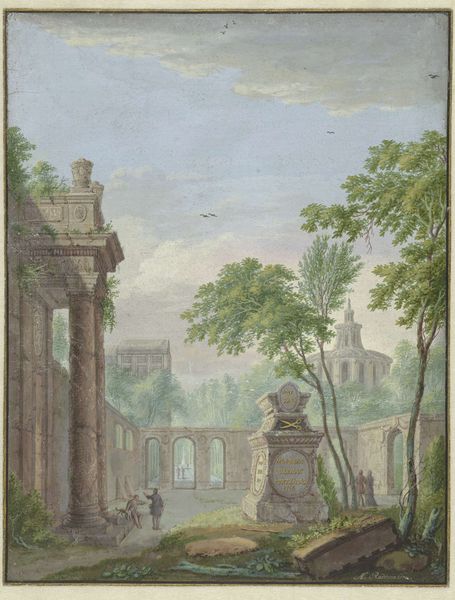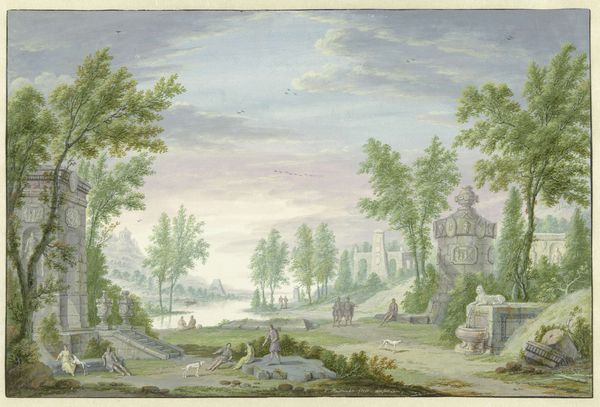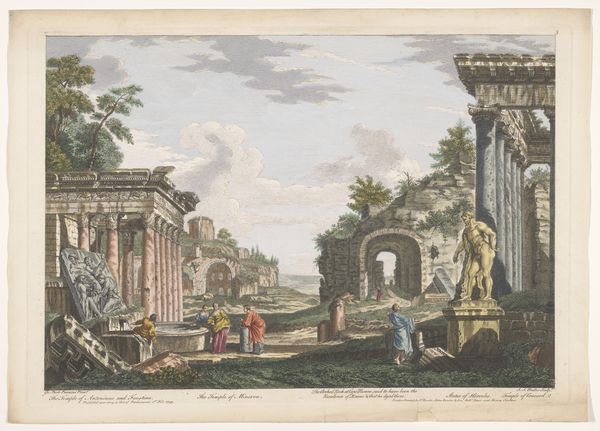
Dimensions: height 353 mm, width 402 mm
Copyright: Rijks Museum: Open Domain
Editor: So here we have Barend Hendrik Thier's "Theatre Scene in a City Garden", created sometime between 1753 and 1811 using watercolour. It feels like a stage set, quite literally! I'm intrigued by the blend of public and private space. How do you interpret the scene's presentation? Curator: This watercolour offers a fascinating glimpse into the societal values of the late 18th century. The "city garden" wasn't just a plot of land; it was a carefully constructed space for social performance. It speaks volumes about how the wealthy classes used constructed landscapes to display their status and cultivated sensibility. The theatrical setup – statues, manicured plants, a central structure that resembles a proscenium – transforms the garden into a stage. Editor: A stage for who exactly? The owners? Their guests? Curator: Exactly! The garden becomes an extension of the home, another room in which to stage social life. Note how the figures are positioned. A woman is carefully tending flowers while other figures observe from within the home. Everything seems very intentional, calculated to project an image of leisure and refinement. Do you see any elements suggesting social critique or perhaps satire? Editor: Maybe the stiffness of the figures? They almost seem like props themselves. I can see it acting as a stage for an elite lifestyle and social class to play out on. I see the message the painting is presenting through its figures in the garden! Curator: Precisely. Thier is capturing a specific moment in the history of class and representation. The garden is therefore not just a place of nature, but one of intense social production. What new appreciation do you derive for "genre painting?" Editor: Definitely how staged everyday life can be when one wants to create and display social expectations in their "scene". Thank you!
Comments
No comments
Be the first to comment and join the conversation on the ultimate creative platform.
